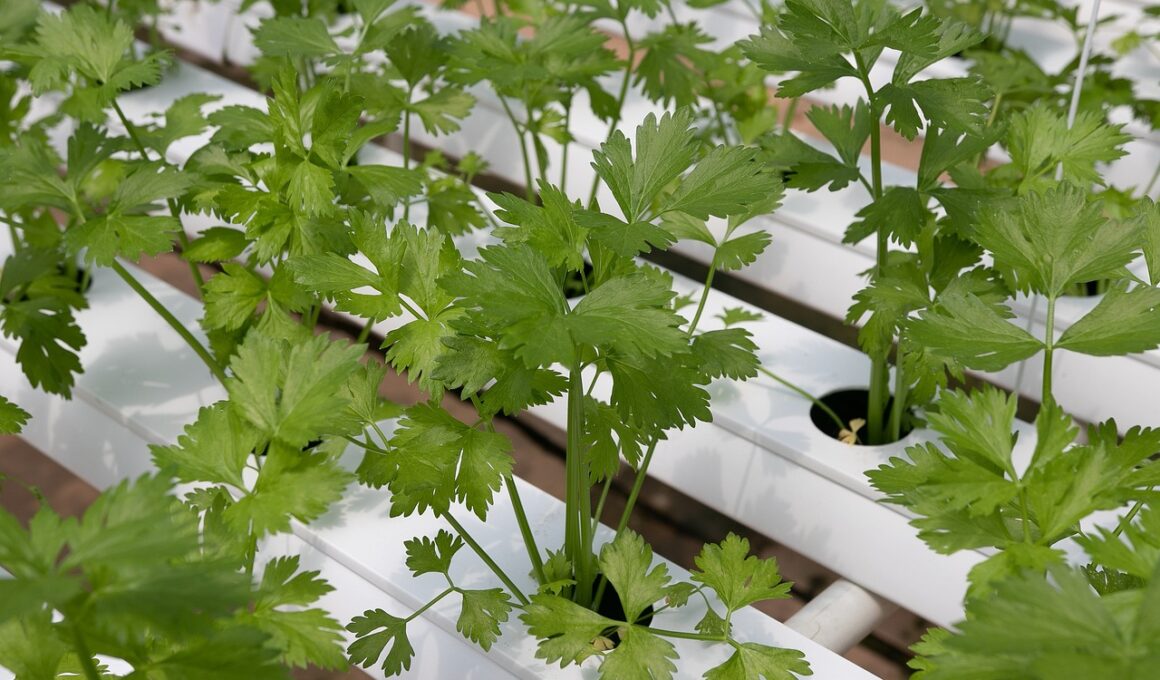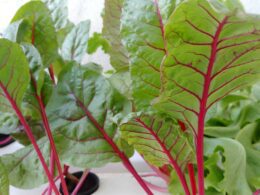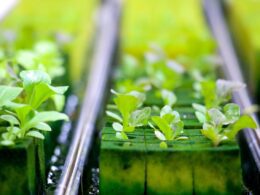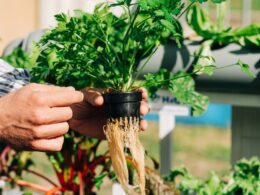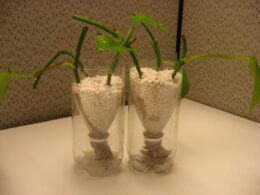If you’re interested in gardening, then you’ve likely heard of hydroponics. This innovative technology has taken the world by storm, allowing for efficient and sustainable cultivation of plants without the need for soil.
While hydroponics has many benefits, it’s essential to recognize that there are also some weaknesses to this technology that you should be aware of.
One of the most significant drawbacks of hydroponics is the high initial investment cost. Setting up a hydroponic system requires specialized equipment and materials, which can be expensive to purchase. Additionally, you may need to invest in training or consulting services to ensure that you’re using the technology correctly.
For those who are just starting out with gardening, the cost of hydroponics may be prohibitive, making it difficult to justify the investment. However, if you’re willing to put in the time and money upfront, hydroponics can offer significant benefits in the long run.
Explanation of Hydroponics Technology
Hydroponics is a method of growing plants without soil, using nutrient-rich water instead. This technology has made significant strides in recent years, and it’s becoming more and more popular.
The advantages of hydroponics are that it uses less water, less land, and fewer pesticides. Additionally, hydroponics can produce crops all year round, which means that farmers can grow more crops and increase their income.
However, there are also disadvantages to hydroponics. One of the sustainability concerns is that it requires a lot of energy to run the system. The lights, pumps, and other equipment needed for hydroponics can be expensive to operate. Additionally, hydroponics can be more expensive to set up than traditional farming methods. This can make it harder for small farmers to adopt this technology.
In conclusion, while hydroponics has many advantages, it also has its drawbacks. The technology can be expensive to set up and requires a lot of energy to operate. Nonetheless, with proper management, hydroponics can be a sustainable and profitable way to grow crops. By weighing the pros and cons, farmers can decide if hydroponics is the right choice for them.
High Initial Investment Cost
The high upfront costs required for setting up a hydroponic system may serve as a barrier for farmers and individuals looking to adopt this method of growing. Compared to traditional soil farming, hydroponic systems require expensive equipment such as pumps, grow lights, and nutrient solutions.
Additionally, the cost of constructing a greenhouse or indoor facility to house the hydroponic system can be a significant investment. Alternative methods such as aquaponics or aeroponics may provide a more cost-effective option for those looking to try their hand at soilless farming.
These methods utilize fish or mist instead of nutrient solutions, which can reduce the need for expensive equipment. Furthermore, conducting a ROI analysis may help individuals determine if the initial investment cost of hydroponics is worth the potential long-term benefits such as higher yields, faster growth rates, and less water usage.
While the high initial investment cost of hydroponics may seem daunting, it is important to consider the potential benefits and alternative options available. With proper planning and research, hydroponics can be a profitable and sustainable method of growing crops. So, if you’re considering hydroponics, don’t let the upfront costs discourage you from exploring the possibilities of soilless farming.
Can Hydroponics Still Be Successful Without the Use of Fish?
Hydroponics minus fish offers great potential for success. By eliminating fish, alternative nutrient solutions like mineral-based fertilizers can be used. This not only saves on resources and maintenance costs, but also addresses concerns about fish waste management. With proper planning and monitoring, hydroponics minus fish can still yield bountiful and sustainable results.
Accessibility Challenges
It’s frustrating to see how limited access to resources and knowledge can prevent individuals from exploring innovative and sustainable farming methods. Vertical farming and hydroponics are great examples of these methods. However, accessibility challenges can be a weakness of hydroponics.
Here are three reasons why accessibility can be an issue:
-
Limited space for vertical farming: Vertical farming requires ample space, which may not be available in urban areas where most people live. This can make it difficult to implement hydroponics on a larger scale.
-
Lack of community gardens: Hydroponics is an excellent way to grow fresh produce in urban areas, but it requires community gardens. Unfortunately, many urban areas lack these spaces, making it challenging for people to practice hydroponics.
-
High maintenance cost: Hydroponics requires specific equipment and regular maintenance. This can be a significant barrier for people who are interested in hydroponics but cannot afford the initial investment.
Overall, accessibility challenges can be a weakness of hydroponics. However, with increased efforts to create community gardens and promote vertical farming, we can make hydroponics more accessible to everyone.
Improvements in Hydroponics Technology
If you’re interested in hydroponics, it’s important to know that there have been significant improvements in technology over the years. Thanks to research and development, there are now more efficient and effective ways to grow plants without soil.
Additionally, advancements in hydroponic systems have made them more cost-effective, allowing more people to take advantage of this growing method.
Research and Development
You’ll discover how research and development can lead to advancements in cultivating plants without soil. Hydroponics technology has come a long way, but there’s always room for improvement.
Research and development are crucial in discovering new methods to make hydroponics more efficient and sustainable. Future prospects in hydroponics technology include improving plant growth rates, nutrient delivery, and water management.
Scientists are also researching ways to make hydroponics more eco-friendly by reducing energy consumption and minimizing environmental impact. Through research and development, we can find new ways to optimize hydroponics, making it a more viable option for sustainable agriculture.
So, if you’re interested in hydroponics, keep an eye out for new developments in the field.
Cost-effectiveness
Looking to save money while still reaping the benefits of growing plants without soil? Hydroponics might not be the answer you’re looking for.
While hydroponics offers many advantages, cost-effectiveness is not always one of them. The initial investment in hydroponic systems and equipment can be quite expensive, not to mention the ongoing costs of maintaining and monitoring the system.
However, it’s important to conduct a cost benefit analysis to weigh the long-term benefits of hydroponics against the initial costs. Hydroponic systems can produce higher yields with less water and space than traditional soil-based farming, which can ultimately lead to cost savings in the long run.
Additionally, sustainability concerns are becoming more prevalent in the agriculture industry, and hydroponics offers a more eco-friendly way to grow crops.
While cost-effectiveness may not be the strongest aspect of hydroponics, it’s important to consider all the benefits before making a decision.
Conclusion: Pros and Cons of Hydroponics
So, now you know the advantages and disadvantages of using this innovative farming method. Hydroponics has its own pros and cons, and it’s up to you to decide whether this method is the right one for you or not.
One of the main advantages of hydroponics is that it’s a sustainable way of farming, as it uses less water and land compared to traditional farming methods. It’s also a great way to grow fresh produce in urban areas where space is limited.
However, there are also some weaknesses of hydroponics that you should be aware of. One of them is that it can be expensive to set up and maintain a hydroponic system. This may deter some people from using this method, especially those who are on a tight budget. Another weakness is that the impact of hydroponics on food quality and nutrition is still not well-understood. Some studies suggest that hydroponic produce may have lower nutrient content compared to soil-grown produce.
Despite its weaknesses, hydroponics is still a great way to grow fresh produce in areas where traditional farming is not possible. It’s a sustainable method that can help reduce our reliance on traditional farming methods, which can have negative impacts on the environment. If you’re interested in trying out hydroponics, make sure to do your research and weigh the pros and cons before investing in a system.
Frequently Asked Questions
What are the best plants to grow using hydroponics?
If you’re interested in indoor gardening, hydroponics might just be the perfect solution for you. With hydroponics, you can grow a variety of plants year-round using a nutrient solution instead of soil.
The best plants to grow using hydroponics include leafy greens like lettuce and spinach, herbs like basil and cilantro, and even some fruits and vegetables like strawberries and tomatoes. With hydroponics, you have full control over the growing environment, including temperature, humidity, and lighting.
Plus, because you’re not using soil, there’s less risk of pests and disease. So if you’re looking for a safe and effective way to grow plants indoors, hydroponics is definitely worth considering.
Is hydroponics a sustainable method of farming?
Looking at the benefits vs. drawbacks of hydroponics, it’s clear that it has many advantages. For one, hydroponics allows for increased efficiency in water and nutrient usage, leading to higher crop yields and reduced waste.
However, it’s important to consider the environmental impact of this method of farming. While it may be more sustainable in terms of water usage, the production and disposal of hydroponic systems can still have a negative impact on the environment.
Overall, the use of hydroponics should be approached with a balance of the benefits and drawbacks, and consideration of its environmental impact.
What is the average yield per plant using hydroponics?
Are you curious about how much yield you can expect from each plant when using hydroponics? Well, the average yield per plant using this method can vary depending on several factors such as the type of plant, growing conditions, and the nutrient solution used.
However, hydroponics has been found to promote faster and healthier plant growth, which can ultimately lead to a higher yield compared to traditional soil-based farming. With proper care, attention, and the right equipment, you can expect an impressive average yield per plant using hydroponics.
So, if you’re looking for a sustainable and efficient way to grow your plants, hydroponics might just be the perfect solution for you.
Are there any health risks associated with consuming produce grown using hydroponics?
When it comes to consuming produce grown using hydroponics, there are some potential health risks to be aware of. One concern is the possibility of nutrient absorption issues. Because hydroponic plants are grown in a nutrient-rich solution rather than soil, they may not absorb the same mix of nutrients as traditionally grown plants. However, this risk can be mitigated by ensuring that the nutrient solution is properly balanced.
Another concern is the potential for bacterial growth in the closed hydroponic system, which could lead to foodborne illnesses. It’s important to take precautions such as regularly cleaning the system and monitoring for any signs of contamination.
Overall, while there are some potential health risks associated with hydroponics, they can be managed with proper care and attention.
Can hydroponics be used for large-scale commercial farming?
Hydroponic farming on a large scale has both advantages and disadvantages. One advantage is that it can be cost-effective, as it requires less space and water than traditional farming methods. However, the initial investment for equipment and setup can be expensive.
Another disadvantage is that it may not be feasible for certain crops, such as those with deep roots or high nutrient requirements. Additionally, there is a concern about the reliance on artificial lighting and fertilizers, which may not be sustainable in the long term.
Despite these drawbacks, hydroponic farming is gaining popularity as a way to produce fresh, locally grown produce year-round.
Conclusion
So, now that you know all about hydroponics technology, what are its pros and cons?
On the positive side, hydroponics allows for more efficient use of resources, increased crop yields, and year-round production. Plus, it can be a great option for urban areas or places with poor soil quality.
However, there are also some drawbacks. The initial investment cost can be high, and there may be accessibility challenges for those living in areas with limited resources. Additionally, there’s always the risk of system failure or disease outbreak, which can be devastating for a hydroponic operation.
Overall, hydroponics technology has many benefits, but it may not be the best choice for everyone. Consider the pros and cons carefully before deciding if hydroponics is right for you.





